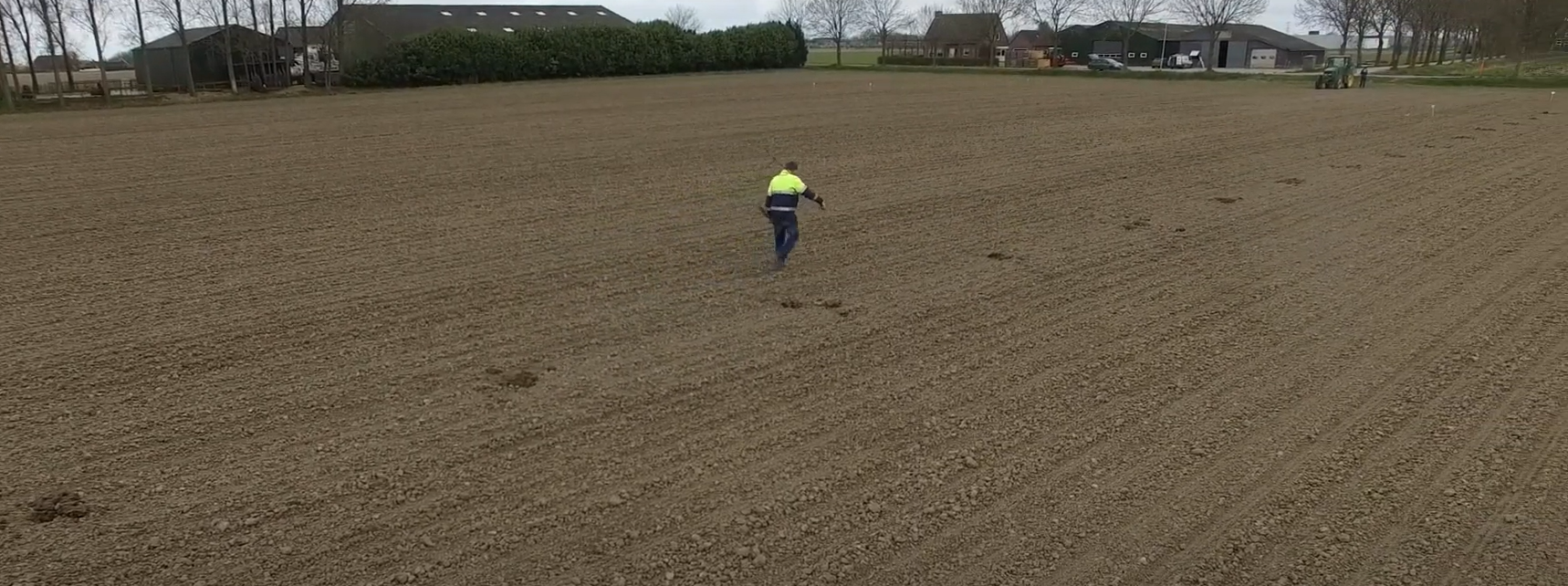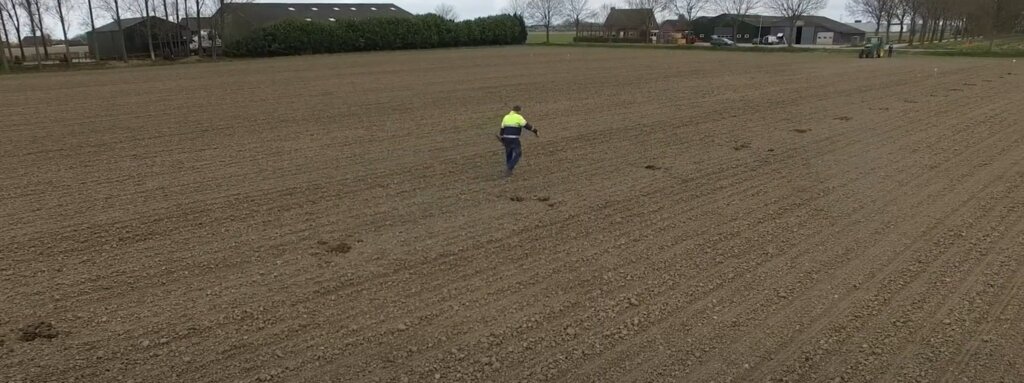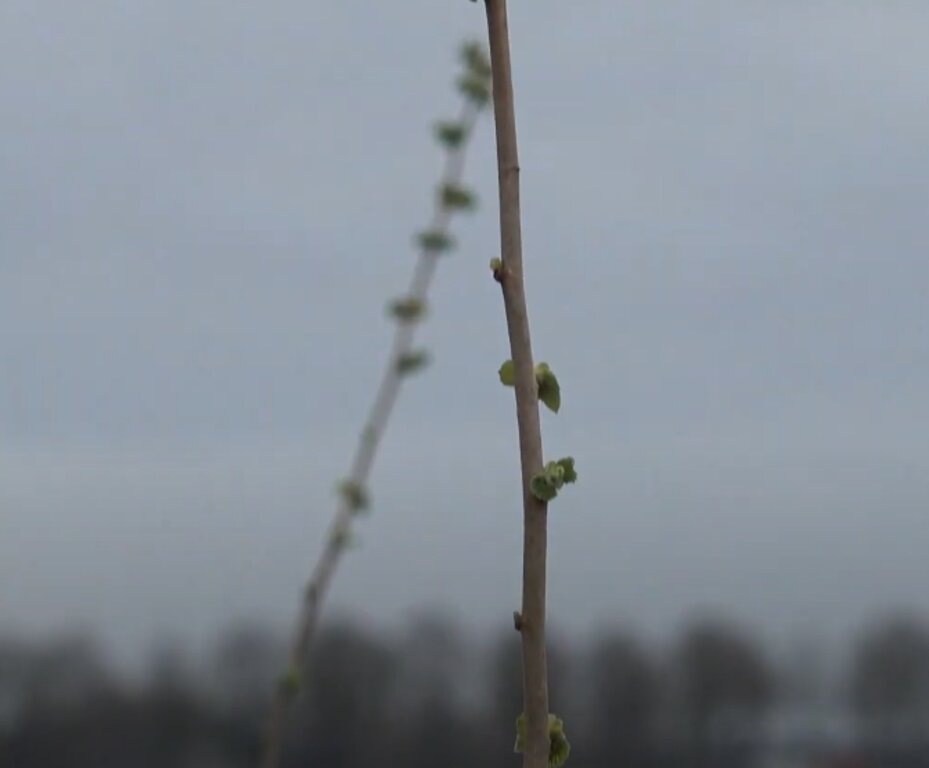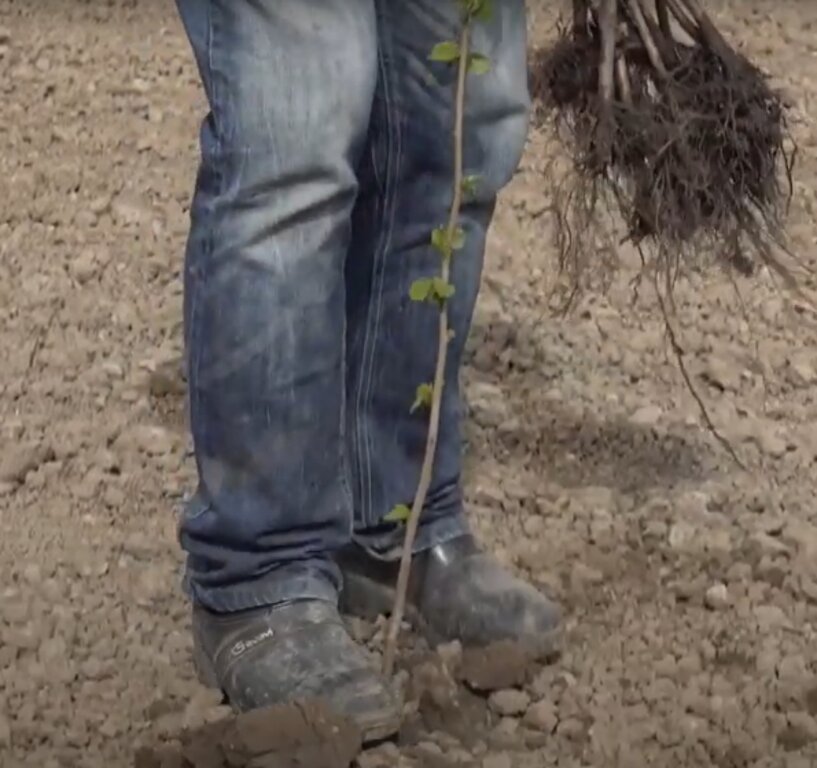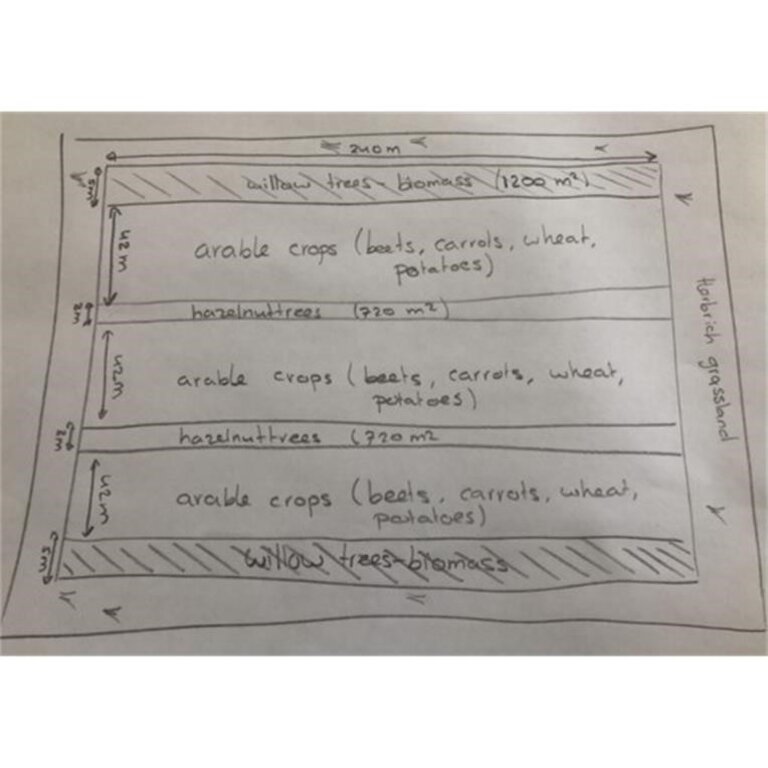Agroforestry on arable land [Netherlands]
- Creation:
- Update:
- Compiler: Alan Radbourne
- Editor: –
- Reviewers: William Critchley, Rima Mekdaschi Studer
Agroforestry in Zevenbergen
technologies_6879 - Netherlands
View sections
Expand all Collapse all1. General information
1.2 Contact details of resource persons and institutions involved in the assessment and documentation of the Technology
Key resource person(s)
SLM specialist:
Hoogendijk Tijmen
Southern Agriculture and Horticulture Organization (ZLTO)
Netherlands
land user:
Hermus Piet
Akkerbouwbedrijf Hermus
Netherlands
Name of project which facilitated the documentation/ evaluation of the Technology (if relevant)
European Interreg project FABulous Farmers1.3 Conditions regarding the use of data documented through WOCAT
The compiler and key resource person(s) accept the conditions regarding the use of data documented through WOCAT:
Yes
1.4 Declaration on sustainability of the described Technology
Is the Technology described here problematic with regard to land degradation, so that it cannot be declared a sustainable land management technology?
No
2. Description of the SLM Technology
2.1 Short description of the Technology
Definition of the Technology:
Willow and hazelnut trees have been planted in strips on arable land to reduce windspeed, decrease the leaching of nutrients and attract and support natural enemies of crops pests.
2.2 Detailed description of the Technology
Description:
This agroforestry technology is being implemented on an arable field of 5.48 hectares in the South-West of the Netherlands. Strips of willow and hazelnut trees have been planted and arable crops are grown in between these strips. The outside of the field is banded with herb-rich grassland to attract natural enemies of the crop pests. In total there are four trees strips (two each of willow and hazelnut), each strip of 5 metres x 240 metres and separated by 42 metres. The land between tree strips is used for annual cropping. The willow trees were planted to produce biomass for bedding in a goat pen, and the hazelnuts were planted for the production of hazelnuts. The willows, especially, will attract many natural enemies to control insect pests of the crops. All trees were bought from a local grower. A planting machine was used to plant the cuttings (3600 pieces) of willow. The hazelnut seedlings (192 pieces) were planted by hand. Weed control between the rows of hazelnut trees will be done by a motorised two-wheel cultivator. Furthermore, a picking machine in front of a small tractor will be used to collect the hazelnuts. The farmer hopes that the trees will develop steadily and the first products can be harvested within three years.
2.3 Photos of the Technology
2.4 Videos of the Technology
Comments, short description:
https://www.youtube.com/watch?v=snibuN3NitA
Explanation from Piet Hermus why he has chosen to grow trees on his arable land
Date:
01/02/2021
Location:
Zevenbergsche Hoek, Netherlands
Name of videographer:
Future Farmers Film Productions
2.5 Country/ region/ locations where the Technology has been applied and which are covered by this assessment
Country:
Netherlands
Region/ State/ Province:
Noord-Brabant
Further specification of location:
Zevenbergsche Hoek
Specify the spread of the Technology:
- evenly spread over an area
If precise area is not known, indicate approximate area covered:
- < 0.1 km2 (10 ha)
Is/are the technology site(s) located in a permanently protected area?
No
Map
×2.6 Date of implementation
Indicate year of implementation:
2021
2.7 Introduction of the Technology
Specify how the Technology was introduced:
- through land users' innovation
- through projects/ external interventions
Comments (type of project, etc.):
Farmer's ideas supported as part of the FAB Farmers project
3. Classification of the SLM Technology
3.1 Main purpose(s) of the Technology
- improve production
- reduce, prevent, restore land degradation
- preserve/ improve biodiversity
3.2 Current land use type(s) where the Technology is applied
Land use mixed within the same land unit:
Yes
Specify mixed land use (crops/ grazing/ trees):
- Agroforestry

Cropland
- Annual cropping
- Tree and shrub cropping
Annual cropping - Specify crops:
- cereals - wheat (spring)
- root/tuber crops - potatoes
- vegetables - root vegetables (carrots, onions, beet, other)
Tree and shrub cropping - Specify crops:
- tree nuts (brazil nuts, pistachio, walnuts, almonds, etc.)
Number of growing seasons per year:
- 1
Is intercropping practiced?
No
Is crop rotation practiced?
Yes
If yes, specify:
4 year rotation of beet, carrots, wheat, potatoes.
3.3 Has land use changed due to the implementation of the Technology?
Has land use changed due to the implementation of the Technology?
- Yes (Please fill out the questions below with regard to the land use before implementation of the Technology)
Land use mixed within the same land unit:
No

Cropland
- Annual cropping
Is crop rotation practiced?
Yes
3.4 Water supply
Water supply for the land on which the Technology is applied:
- mixed rainfed-irrigated
3.5 SLM group to which the Technology belongs
- agroforestry
- windbreak/ shelterbelt
- integrated pest and disease management (incl. organic agriculture)
3.6 SLM measures comprising the Technology

vegetative measures
- V1: Tree and shrub cover
3.7 Main types of land degradation addressed by the Technology

soil erosion by wind
- Et: loss of topsoil
3.8 Prevention, reduction, or restoration of land degradation
Specify the goal of the Technology with regard to land degradation:
- prevent land degradation
4. Technical specifications, implementation activities, inputs, and costs
4.1 Technical drawing of the Technology
Technical specifications (related to technical drawing):
2 Strips of willow trees.: planting distance 1,5 by 1,5 meters. Cutting cycle 3 years. 3600 cuttings were planted
2 strips of hazelnut trees: Planting distance 5 by 2,5 meters. 195 hazelnut trees were planted.
Distance between tree rows: 42 meters
Author:
Tijmen Hoogendijk
Date:
23/01/2021
4.2 General information regarding the calculation of inputs and costs
Specify how costs and inputs were calculated:
- per Technology unit
Specify unit:
per 5.48ha field
other/ national currency (specify):
Euro
If relevant, indicate exchange rate from USD to local currency (e.g. 1 USD = 79.9 Brazilian Real): 1 USD =:
0.92
4.3 Establishment activities
| Activity | Timing (season) | |
|---|---|---|
| 1. | Planting the trees | Winter |
| 2. | Cutting williow for planting | Winter |
4.4 Costs and inputs needed for establishment
| Specify input | Unit | Quantity | Costs per Unit | Total costs per input | % of costs borne by land users | |
|---|---|---|---|---|---|---|
| Labour | Planting trees by hand by farmer | hours | 16.0 | 50.0 | 800.0 | 100.0 |
| Equipment | Planting machine willow cuttings | each | 1.0 | 300.0 | 300.0 | 100.0 |
| Plant material | Willow cuttings | Cuttings / trees | 3600.0 | 0.2 | 720.0 | 100.0 |
| Plant material | Hazelnut trees | trees | 200.0 | 2.5 | 500.0 | 100.0 |
| Total costs for establishment of the Technology | 2320.0 | |||||
| Total costs for establishment of the Technology in USD | 2521.74 | |||||
Comments:
Total costs for establishment on 5.48ha field
4.5 Maintenance/ recurrent activities
| Activity | Timing/ frequency | |
|---|---|---|
| 1. | Pruning trees | Anually |
| 2. | Irrigating young trees (as req) | summer |
| 3. | Harvesting nuts | Autumn |
| 4. | Weed control | as required |
4.6 Costs and inputs needed for maintenance/ recurrent activities (per year)
| Specify input | Unit | Quantity | Costs per Unit | Total costs per input | % of costs borne by land users | |
|---|---|---|---|---|---|---|
| Labour | Farmer time for pruning & harvesting | day | 3.0 | 250.0 | 750.0 | 100.0 |
| Labour | Farmer time for weed control / irrigation (time varies) | day | 4.0 | 250.0 | 1000.0 | 100.0 |
| Equipment | Harvesting machine (price currently unknown) | hire / purchase | 1.0 | 100.0 | ||
| Total costs for maintenance of the Technology | 1750.0 | |||||
| Total costs for maintenance of the Technology in USD | 1902.17 | |||||
Comments:
Harvesting machine costs currently unknown. Total costs for maintenance of 5.48 ha field.
4.7 Most important factors affecting the costs
Describe the most determinate factors affecting the costs:
Climate impacting requirement of irrigation time will vary. Main future cost is harvesting and the net costs with nut crop yield.
5. Natural and human environment
5.1 Climate
Annual rainfall
- < 250 mm
- 251-500 mm
- 501-750 mm
- 751-1,000 mm
- 1,001-1,500 mm
- 1,501-2,000 mm
- 2,001-3,000 mm
- 3,001-4,000 mm
- > 4,000 mm
Agro-climatic zone
- sub-humid
5.2 Topography
Slopes on average:
- flat (0-2%)
- gentle (3-5%)
- moderate (6-10%)
- rolling (11-15%)
- hilly (16-30%)
- steep (31-60%)
- very steep (>60%)
Landforms:
- plateau/plains
- ridges
- mountain slopes
- hill slopes
- footslopes
- valley floors
Altitudinal zone:
- 0-100 m a.s.l.
- 101-500 m a.s.l.
- 501-1,000 m a.s.l.
- 1,001-1,500 m a.s.l.
- 1,501-2,000 m a.s.l.
- 2,001-2,500 m a.s.l.
- 2,501-3,000 m a.s.l.
- 3,001-4,000 m a.s.l.
- > 4,000 m a.s.l.
Indicate if the Technology is specifically applied in:
- not relevant
5.3 Soils
Soil depth on average:
- very shallow (0-20 cm)
- shallow (21-50 cm)
- moderately deep (51-80 cm)
- deep (81-120 cm)
- very deep (> 120 cm)
Soil texture (topsoil):
- medium (loamy, silty)
Soil texture (> 20 cm below surface):
- medium (loamy, silty)
Topsoil organic matter:
- medium (1-3%)
5.4 Water availability and quality
Ground water table:
< 5 m
Availability of surface water:
good
Water quality (untreated):
poor drinking water (treatment required)
Water quality refers to:
both ground and surface water
Is water salinity a problem?
No
Is flooding of the area occurring?
No
5.5 Biodiversity
Species diversity:
- medium
Habitat diversity:
- medium
Comments and further specifications on biodiversity:
Agrobiodiversity will increase with the new system
5.6 Characteristics of land users applying the Technology
Sedentary or nomadic:
- Sedentary
Market orientation of production system:
- commercial/ market
Off-farm income:
- less than 10% of all income
Relative level of wealth:
- average
Individuals or groups:
- individual/ household
Level of mechanization:
- mechanized/ motorized
Gender:
- men
Age of land users:
- middle-aged
5.7 Average area of land used by land users applying the Technology
- < 0.5 ha
- 0.5-1 ha
- 1-2 ha
- 2-5 ha
- 5-15 ha
- 15-50 ha
- 50-100 ha
- 100-500 ha
- 500-1,000 ha
- 1,000-10,000 ha
- > 10,000 ha
Is this considered small-, medium- or large-scale (referring to local context)?
- medium-scale
5.8 Land ownership, land use rights, and water use rights
Land ownership:
- company
Land use rights:
- individual
Water use rights:
- communal (organized)
Are land use rights based on a traditional legal system?
No
5.9 Access to services and infrastructure
health:
- poor
- moderate
- good
education:
- poor
- moderate
- good
technical assistance:
- poor
- moderate
- good
employment (e.g. off-farm):
- poor
- moderate
- good
markets:
- poor
- moderate
- good
energy:
- poor
- moderate
- good
roads and transport:
- poor
- moderate
- good
drinking water and sanitation:
- poor
- moderate
- good
financial services:
- poor
- moderate
- good
6. Impacts and concluding statements
6.1 On-site impacts the Technology has shown
Socio-economic impacts
Production
crop production
Comments/ specify:
loss of land off-set by future nut production
wood production
Comments/ specify:
Introduction of woody features
production area
Comments/ specify:
Land given over to windbreak / other production of wood & nuts
land management
Comments/ specify:
More variety of skills, equipment and more time required.
Income and costs
expenses on agricultural inputs
Comments/ specify:
Costs of installation
farm income
Comments/ specify:
Short-term costs as nut and wood production not quick return
diversity of income sources
Comments/ specify:
Eventually a diversity of products will support long term sustainability
workload
Comments/ specify:
Time costly for installation and ongoing maintenence & harvesting.
Ecological impacts
Soil
soil moisture
soil cover
soil loss
Comments/ specify:
Buffer strip action
Biodiversity: vegetation, animals
Vegetation cover
biomass/ above ground C
Comments/ specify:
greater above ground with woody features
plant diversity
beneficial species
Climate and disaster risk reduction
drought impacts
wind velocity
Specify assessment of on-site impacts (measurements):
Based on expert opinion.
6.2 Off-site impacts the Technology has shown
Specify assessment of off-site impacts (measurements):
Not large enough to have a significant impact downstream.
6.3 Exposure and sensitivity of the Technology to gradual climate change and climate-related extremes/ disasters (as perceived by land users)
Gradual climate change
Gradual climate change
| Season | increase or decrease | How does the Technology cope with it? | |
|---|---|---|---|
| annual temperature | increase | moderately |
6.4 Cost-benefit analysis
How do the benefits compare with the establishment costs (from land users’ perspective)?
Short-term returns:
negative
Long-term returns:
slightly positive
How do the benefits compare with the maintenance/ recurrent costs (from land users' perspective)?
Short-term returns:
slightly negative
Long-term returns:
slightly negative
6.5 Adoption of the Technology
- single cases/ experimental
6.6 Adaptation
Has the Technology been modified recently to adapt to changing conditions?
No
6.7 Strengths/ advantages/ opportunities of the Technology
| Strengths/ advantages/ opportunities in the land user’s view |
|---|
| Adds a future variety of produce |
| Wind break will aid crop protection |
| Strengths/ advantages/ opportunities in the compiler’s or other key resource person’s view |
|---|
| Increases beneficial species |
| Improves soil health |
| Better long-term business prospects for sustainability |
6.8 Weaknesses/ disadvantages/ risks of the Technology and ways of overcoming them
| Weaknesses/ disadvantages/ risks in the land user’s view | How can they be overcome? |
|---|---|
| Short-term financial and time cost | Grant funding |
| No guarentee of good nut or wood yield | Ensure maintenence to highest standard to improve chance of good yield. |
| Weaknesses/ disadvantages/ risks in the compiler’s or other key resource person’s view | How can they be overcome? |
|---|---|
| Knowledge of markets for new products need to be identified early | Gain advice from SLM expert |
7. References and links
7.1 Methods/ sources of information
- field visits, field surveys
1
- interviews with land users
1
When were the data compiled (in the field)?
01/03/2022
Links and modules
Expand all Collapse allLinks
No links
Modules
No modules


